SUMMARY
SUBSTACK READS
→ The Guernica of AI
AI is no longer just a tool. It’s making decisions stripped of humanity, with life-and-death consequences, often executed with military precision.
→ Getting Boomers To Love Germany’s Insane Hate Speech Laws
For years, journalists have sought to highlight the “evils” of hate speech. Usually they would interview a “victim” of such dastardly deeds, who would recall how hurt they were to see someone suggest they don’t like immigrants or that certain groups commit more crime. These appeals haven’t really worked. So 60 Minutes reporter Sharyn Alfonsi took a different approach. In her feature on Germany’s laws, the primary selling point is that these rules ensure the country has civil debate and stifles extremists who use bad words.
→ Palestinian activists have shattered records as gloriously colossal fuck-ups
The atrocious messaging discipline combined with the barely concealed militant venom evaporated whatever audiences may have been initially receptive (read: the Democratic party). The activists responded to this self-inflicted vanishing cachet by launching a temper tantrum cosplaying as a serious political campaign.
→ More tips for being non-partisan in a partisan age
I remember hearing this argument when I debated Richard Delgado, the grandfather of the modern speech code movement, back in 2004 at Williams College. His argument relied to a large degree on the idea that failure to punish the Nazis’ speech is how they came to power, but it’s somewhat refuted by the fact that…Weimar Germany actually punished Nazi speech quite often (spoiler: it didn’t work and, in fact, the Nazis used it to their advantage).
→ Should the Federal Government Exist?
The left’s excesses over the past 10-15 years are the reason why Trump is President again and doing all of the things that he’s doing. They didn’t have to go crazy on race communism. They didn’t have to try and force tranny nonsense on everyone. They didn’t have to try and engage in a “global reset” based around COVID. Those were all unforced errors—they were unnecessary expenditures of political capital.
→ On conspiracy theories of ignorance
However, the tendency to internalise our propaganda also has another important consequence: Propaganda rarely feels like propaganda from the inside. If our private beliefs shift towards those claims and narratives we are motivated to spread, expressing those claims and narratives will feel like honesty. Given this, not only are we disposed to exaggerate the degree to which those we disagree with are participating in disinformation campaigns, but our own side’s propagandistic advocacy is typically invisible to us.
FOOD FOR THOUGHT
→ D.C. feeling the DOGE pain
The Trump administration, through DOGE and its initiative to cut the federal workforce by 10%, has laid off tens of thousands of federal employees during its first month in office, with probationary (first-year) workers being particularly affected.
This looks to be having a profound impact on the local economy in Washington D.C., which overindexes in terms of federal workers as a share of its workforce:
As federal employees are fired and laid off in droves, we’re beginning to see a subsequent rise in initial unemployment claims in the D.C. area:
A January analysis by think tank Urban Institute estimates that D.C.’s unemployment rate could spike from 2.8% to 9.6% if workforce reductions continue as planned.
There has been conflicting reporting on the impact of DOGE layoffs on the local D.C. real estate market. One graphic garnering a lot of buzz is a Zillow map of new home listings in the D.C. area over the past 14 days. It’s estimated that around 1-in-5 listings now come from properties up for sale in just the past two weeks:
While home prices do seem to be dipping below trend, with 23.3% of existing inventory seeing price cuts (up 40% month-over-month), it’s still quite early to label it a real estate crisis:

Aside from the economic impact of the layoffs, a question remains: are the mass layoffs illegal?
Federal law permits terminating probationary employees for performance or conduct issues but prohibits mass dismissals without individualized assessments or adherence to Reduction in Force procedures. Perhaps consequently, web searches for “lawyer” in the DC area have surged:
, who is local to D.C. and works in GOP politics, had the following to say on the DOGE cuts:The mass layoffs at some point will probably reach a judge where their legality will be decided. I think it’s notable that in the Pentagon’s most recent statement, they said only 5,400 probationary employees would be let go rather than 50,000 which is what WaPo reported earlier this week.
Also notable is that the President issued an Executive Order directing DOGE to start looking into regulations, possibly signaling a shift away from the mass firings, which are probably not so popular outside the immediate MAGA base.
***
→ Venture Capital Apocalypse
In the heat of the “cheap money,” Zero Interest Rate Policy (ZIRP) era, massive amounts of funding poured into every stage of Venture Capital. There were simply too many dollars being deployed across the same number of start ups, which led to an explosion in the number of “unicorns,” or $1B+ valuations:
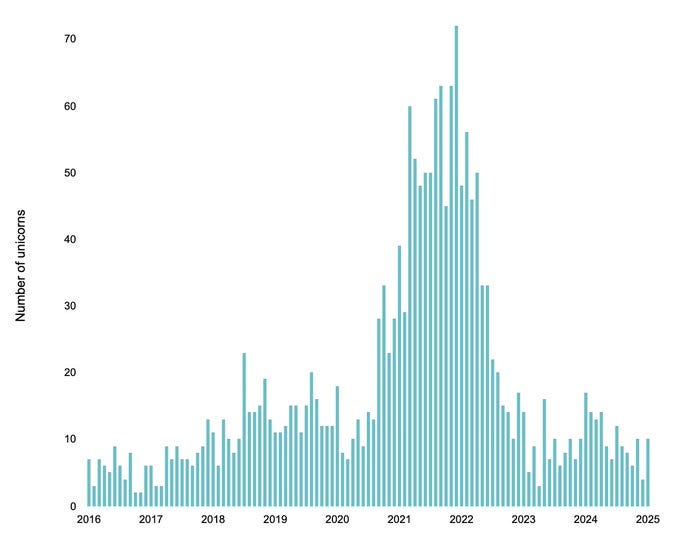
As rates normalized and the Fed tapered its easy monetary policy, valuation discipline returned to private markets resulting in a surge in the number of “down rounds,” or funding rounds in which a startup raises capital at a lower valuation than its previous funding round:
This re-rating of valuations lower has manifested in lows for distributions relative to NAV (Net Asset Value) across most VC funds:
In 2024, the top 30 VC funds raised 74% of all venture capital in the US. Moving forward, we’ll likely continue to see an environment where the largest funds with the ability to have the most extended investment time horizons win out.
***
→ The national debt problem (?)
The US national debt surpassed $36 trillion recently, a six-fold increase in the 21st century alone and now more than 120% of US nominal GDP. Interest payments on the debt alone now comprise 3% of GDP:
While the case can be made for the US government running large deficits during crises to prevent more severe and long-lasting economic downturns, which it did in 2008 and 2020, the government continues to running deficits in a healthy economy — to the tune of 6.92% of nominal GDP in 2024:
Nevertheless, our level of worry over the national debt may depend on which metric is being used. It’s worth asking if GDP, the total value produced each year, is the most suitable metric for assessing the sustainability of US debt.
Invesco Global Market Strategist Brian Levitt makes the case that, when measured against alternative metrics, the national debt problem isn’t as dire as some are suggesting. Levitt writes:
The US is a very wealthy country. For example, the total US household net worth is over $160 trillion, which is close to five times the size of the nation’s debt. From that lens, the debt level may not seem as troubling. It may be one reason why markets generally view the nation as a good creditor.
Indeed, from this perspective, the debt level may not be as concerning:
Furthermore, it may be one of the reasons that despite soaring national debt, markets still generally view the US as a good creditor.
PREDICTION MARKETS
→ Military spending
President Donald Trump’s administration has directed the Pentagon to implement sweeping budget cuts, reducing defense spending by 8% annually over the next five years — amounting to $50 billion per year. These reductions would aim to reallocate funds toward Trump’s defense priorities, including border security, the development of a U.S. “Iron Dome” missile defense system, and the elimination of DEI programs and climate change initiatives within the DoD.
Still, betting markets aren’t quite convinced that Trump will cut military spending, implying <25% odds of it happening:
***
→ A new best AI model?
Elon Musk’s xAI launched its latest model, Grok 3, which was trained on 200,000 GPUs and has over 10 times the compute power of its predecessor. The model reportedly outperforms competitors like OpenAI’s GPT-4o, Google’s Gemini, and DeepSeek’s V3 in tasks such as math, science, coding, and general reasoning. While xAI claims superior performance based on internal benchmarks and crowdsourced evaluations (e.g., Chatbot Arena), independent verification of these claims is pending.
Market participants betting on which company will have the best AI model at the end of February now overwhelmingly predict that it will be xAI:
***
→ DOGE dividend?
The concept of a “DOGE Dividend” has gained attention recently as a potential stimulus-like payment to American taxpayers. "[We are considering] a new concept where we give 20% of the DOGE savings to American citizens and 20% goes to paying down debt," Trump said on Tuesday.
Betting markets are implying nontrivial (~30%) odds of a DOGE dividend happening in 2025:
AROUND THE INTERNET
→ Xeets
***
***
→ Memes
***
***


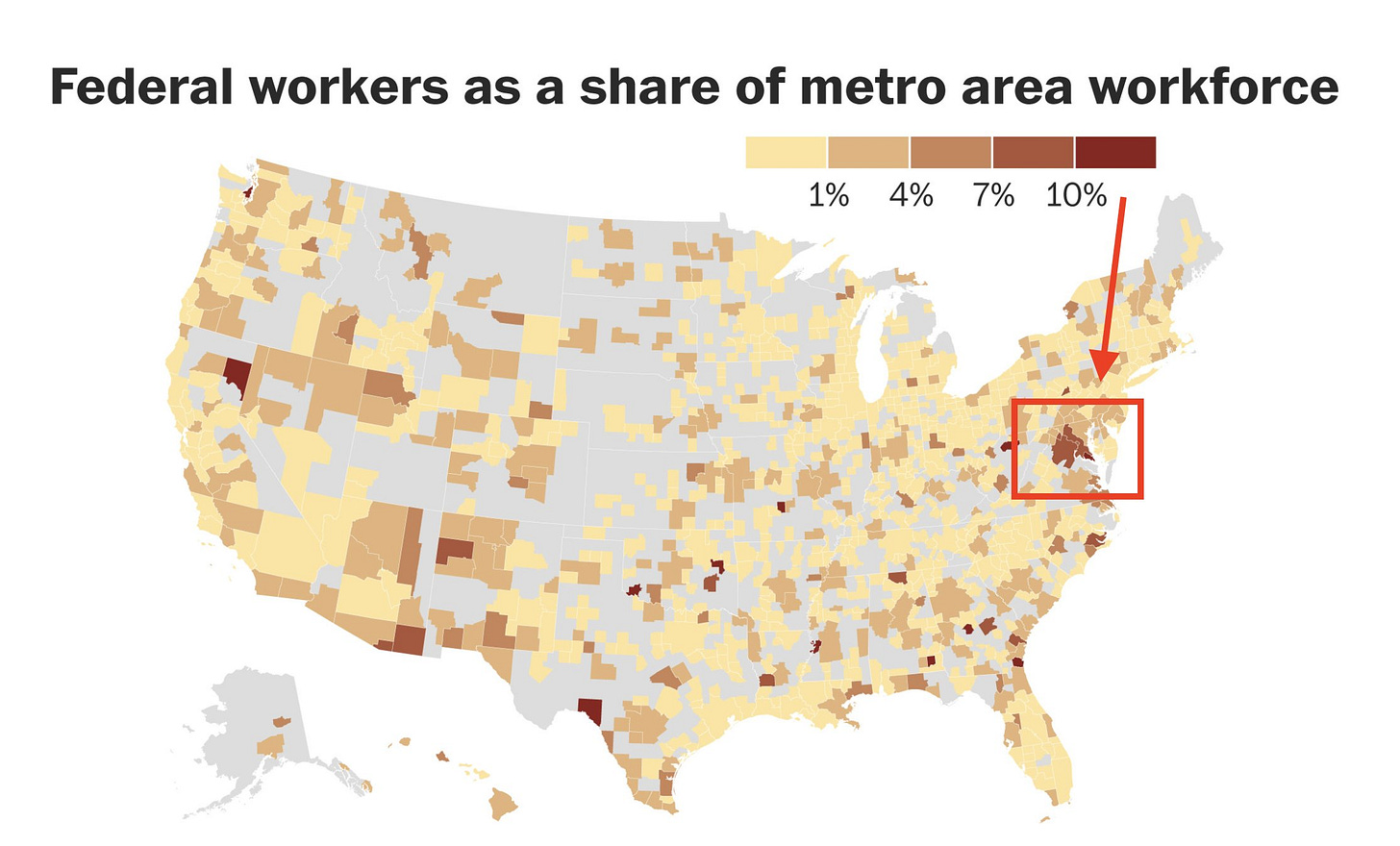
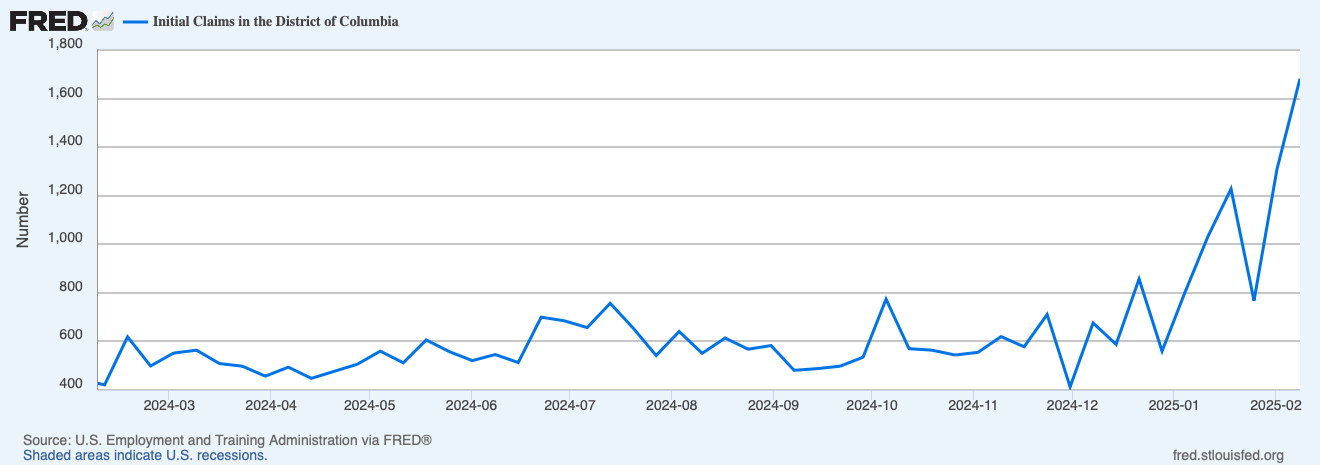


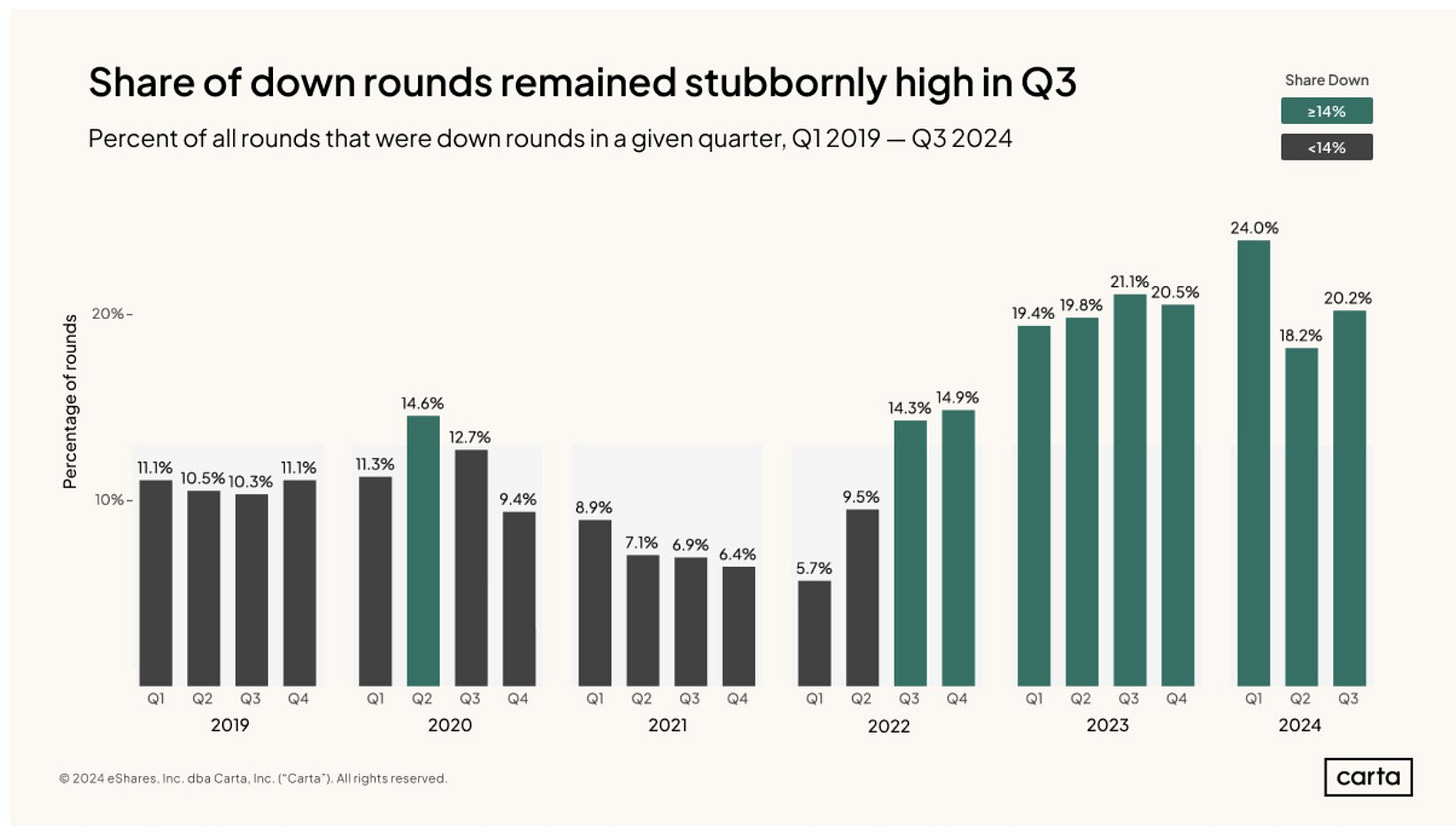
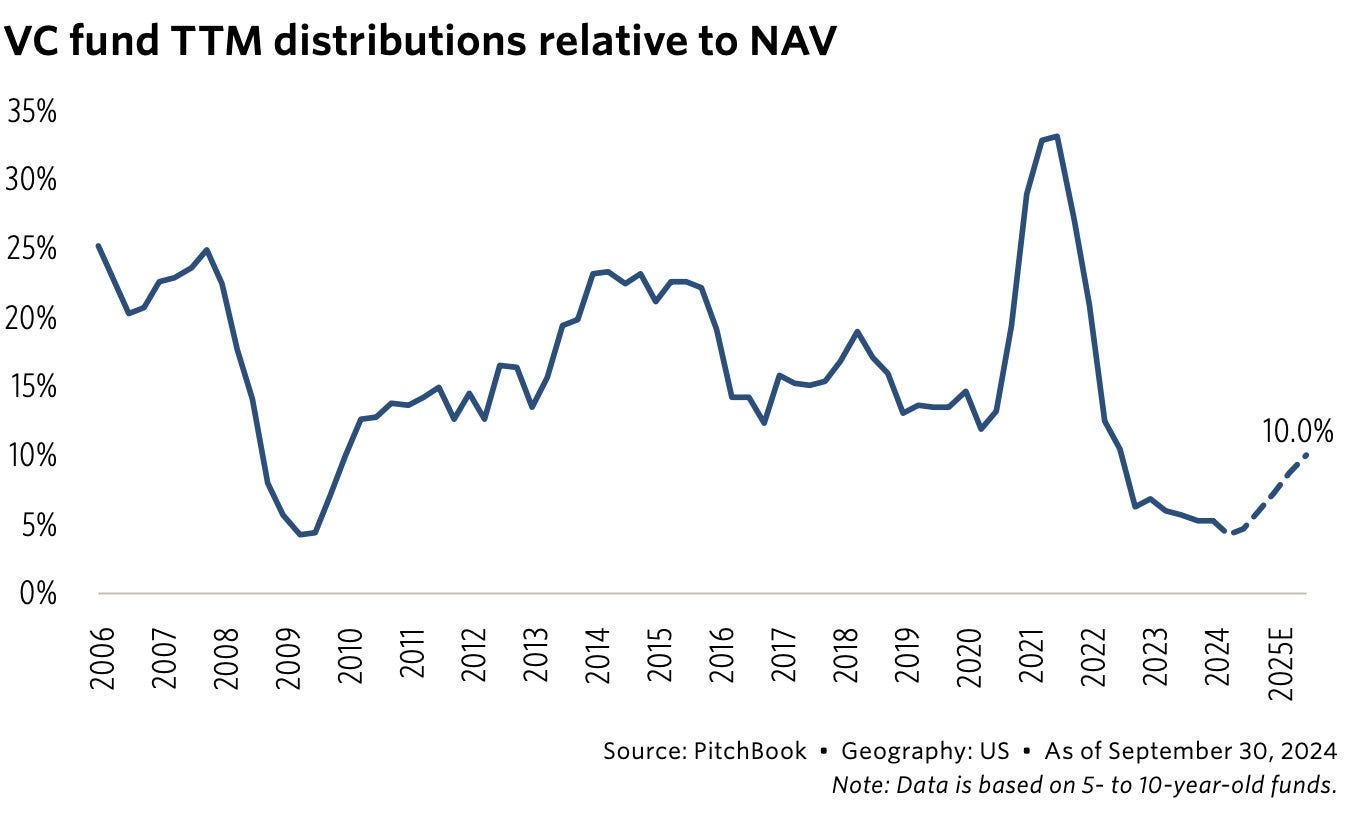

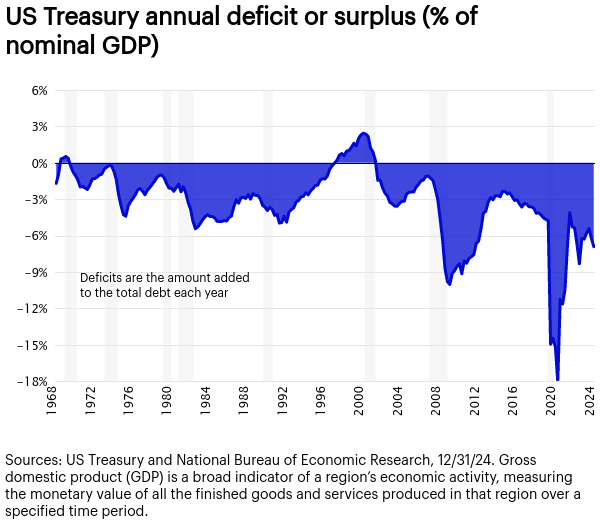
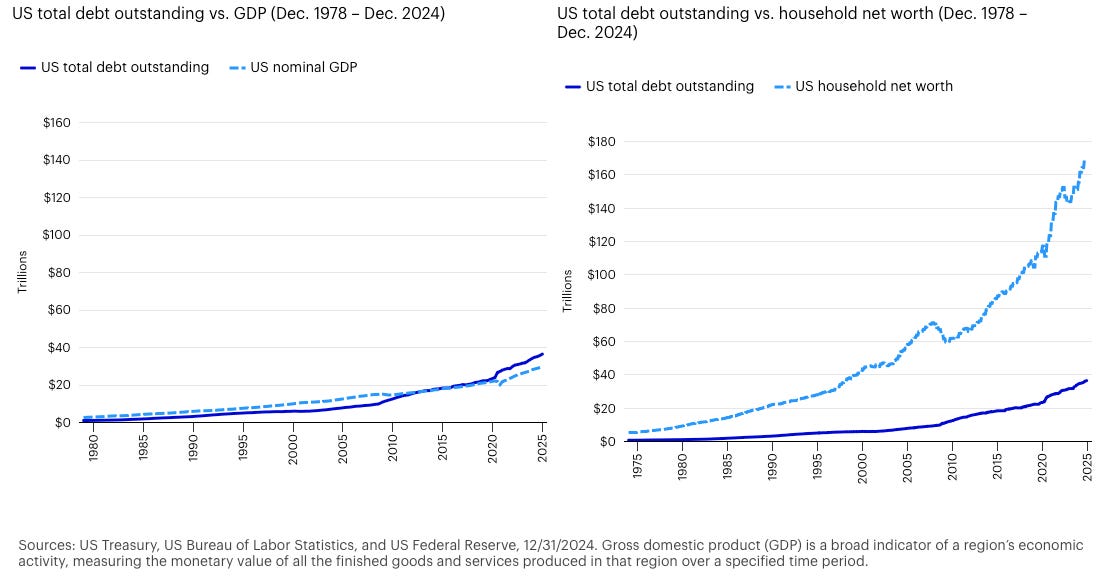


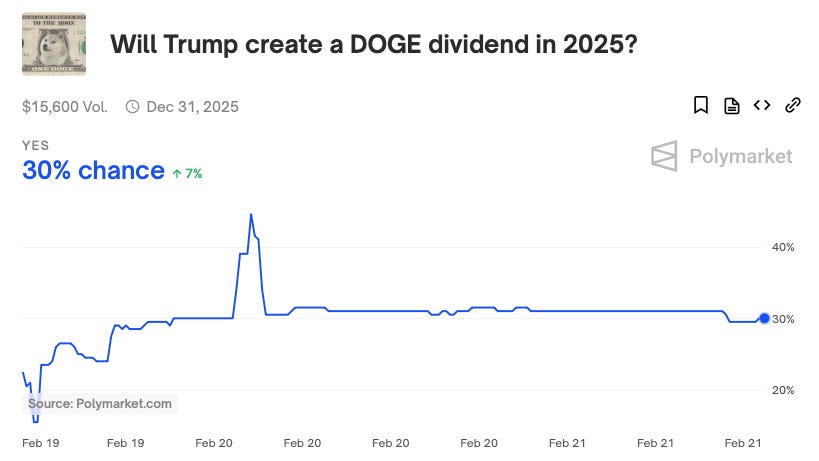
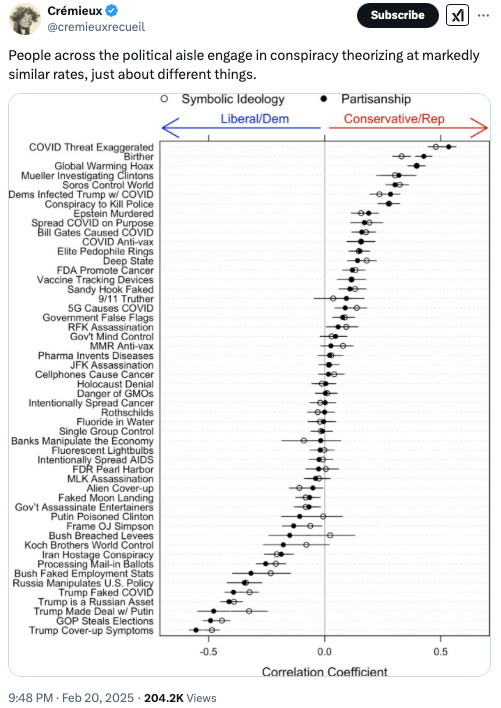





it only took a man with the Midas touch to get Marxist lunatics to show their true colors even more https://torrancestephensphd.substack.com/p/doge-finger